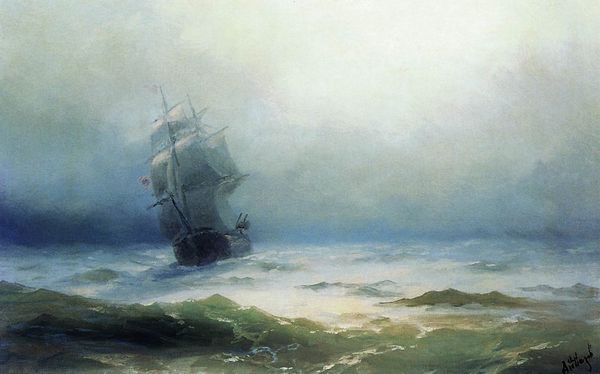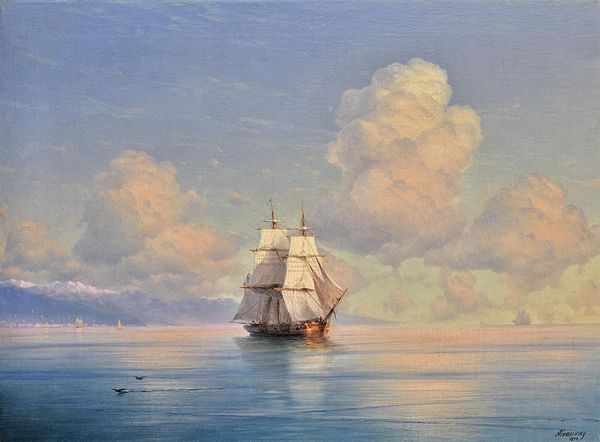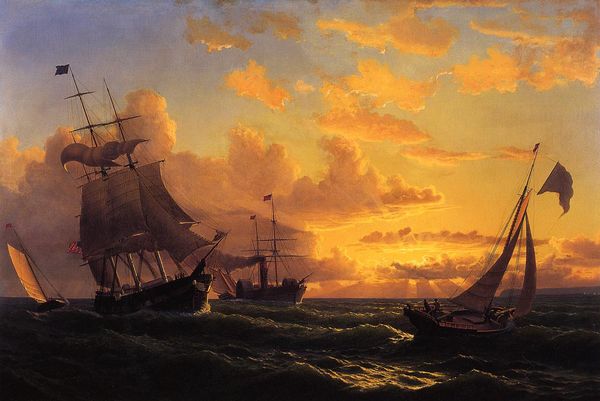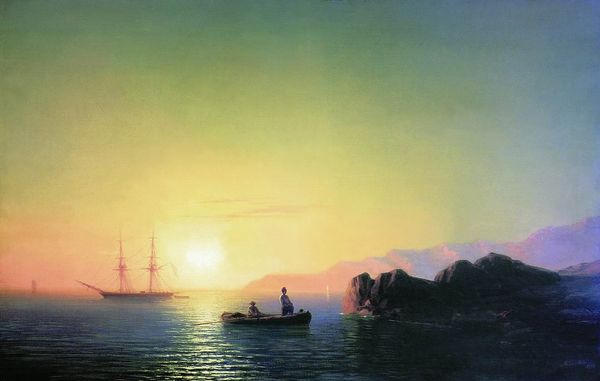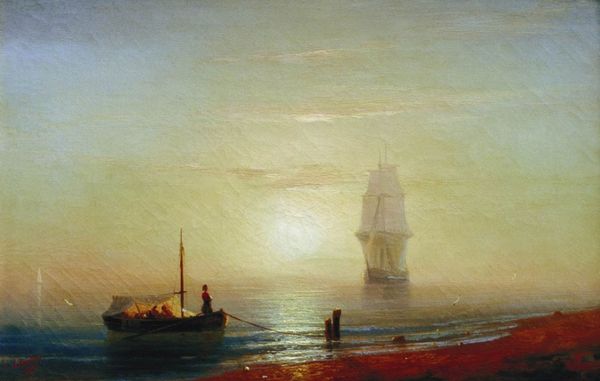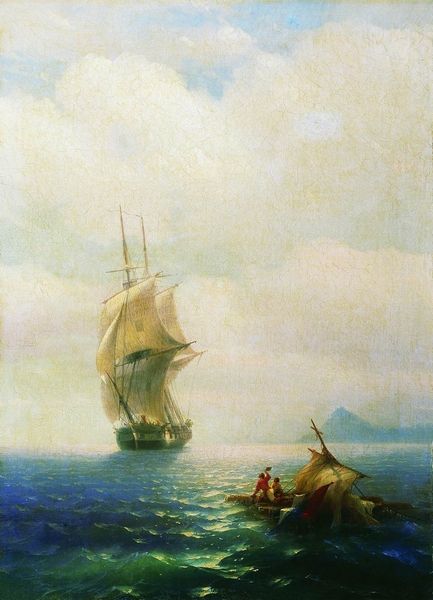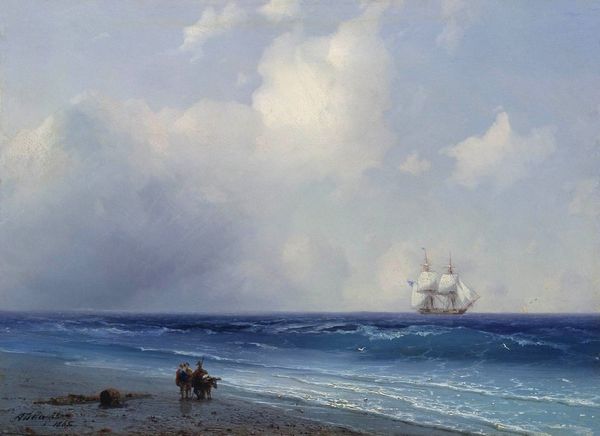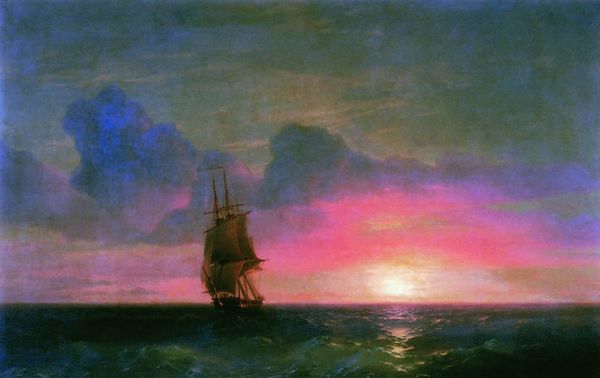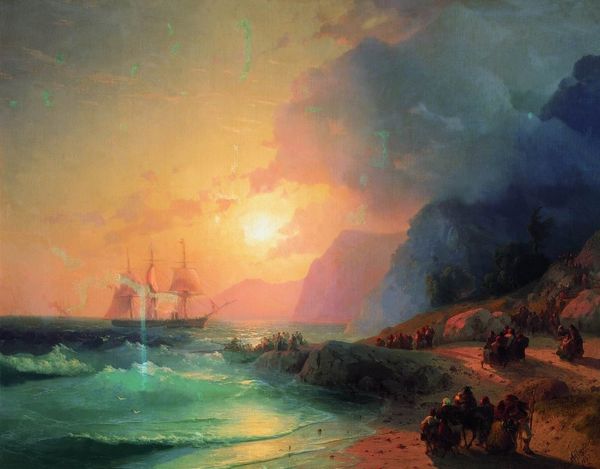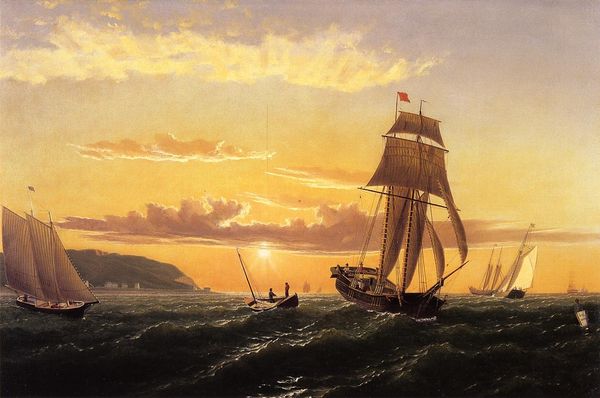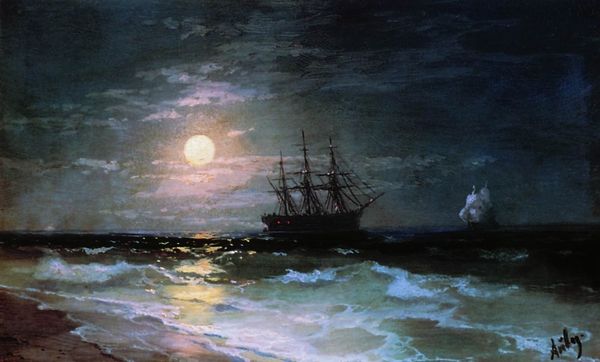
painting, oil-paint
#
boat
#
sky
#
ship
#
painting
#
oil-paint
#
landscape
#
impressionist landscape
#
oil painting
#
ocean
#
romanticism
#
water
#
realism
#
sea
Dimensions: 52 x 82 cm
Copyright: Public domain
Curator: The overwhelming quality I perceive in Aivazovsky's 1838 "Frigate under Sails" is its tranquility. There's a sublime stillness despite the presence of the ship, an agent of movement and change. Editor: Indeed. The scene certainly captures a sense of peace, but the historical context adds a layer of complexity. Consider the role of frigates during this era. They weren't just picturesque vessels; they represented military power, trade, and exploration, often tied to colonial expansion and geopolitical maneuvering. Curator: Yet, the specific compositional choices downplay that potential reading, no? Observe how Aivazovsky utilizes a soft, almost monochromatic palette, dominated by hues of rose, blue, and ochre. It mitigates any potential for drama or conflict, moving it far away from straightforward naval scenes or history paintings. Instead, the frigate is visually integrated into the serene environment, seemingly at peace with its surroundings, which creates a unique symbolic language of his painting style. Editor: While I appreciate your focus on the formal elements, let’s not forget that Romanticism itself had sociopolitical implications. The idealization of nature, often presented as untouched and pure, can be read as a critique of industrialization and urbanization, which were rapidly transforming 19th-century society. Perhaps Aivazovsky’s tranquil seascape reflects a longing for a simpler, less fraught past. The choice to depict a ship on the far left allows our eye to come to a building and the people in the foreground, which creates an intimate view that opposes the epic naval romantic paintings. Curator: An astute point. However, might it also function on a purely aesthetic level, structuring a visual harmony? The distant mountains echo the sails, while the water's undulations mirror the gentle curve of the shoreline. Even the tiny crescent moon above subtly reinforces the circularity of the composition. Each area balances tonally, the clouds blend with the sky. Editor: I see your point. It is interesting to contrast with similar naval paintings commissioned at this time, because of the focus on atmospheric perspective it shifts into almost pure romantic idealism. Still, art is a dialogue between intention and interpretation. Curator: Precisely! By synthesizing formal analysis and historical context, we arrive at a richer understanding of this deceptively simple seascape. It encapsulates both an artistic sensibility and a historical moment. Editor: Agreed. Examining it in its own cultural context enriches the viewing experience and opens it up for discussion about what the intentions truly were behind its construction.
Comments
No comments
Be the first to comment and join the conversation on the ultimate creative platform.

